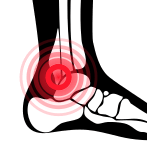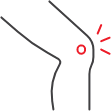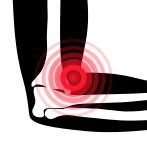One of the most common sports injuries of the knee is a torn meniscus. While many athletes who play contact sports like football and volleyball may have torn their menisci a time or two, other highly active people are also at risk. Before we get too far into detail about the risk factors, however, it’s important to cover the basics so everyone understands how to heal if you have a torn meniscus.
What is a Torn Meniscus?
Before we tell you what a torn meniscus is, it’s important to address the star body part in the room: The meniscus. What exactly is a meniscus?
Each leg has two menisci, the medial meniscus and the lateral meniscus.
- The medial meniscus is on the inner side of the knee.
- The lateral meniscus is on the outside of the knee.
Both menisci are crescent-shaped bands of thick, rubbery cartilage that are attached to the tibia (aka shinbone). Their purpose is to act as shock absorbers and stabilize the knee in times of impact. Think landing from a jump, stepping down hard, pivoting hard, catching your balance, etc.
A meniscus tear happens when you have your foot firmly planted on the ground (weightbearing) and you suddenly twist or rotate their knee. Two things are moving in different directions, tearing the cartilage, and resulting in pain.
Meniscus tears are common in athletes and active people.
What are the Signs and Symptoms of a Torn Meniscus?
Some people with a meniscus tear know right away; they experience sudden and severe pain, and it’s pretty obvious that something is wrong. For others, however, a moderate meniscus tear could take time to rear its ugly head. These people may experience some initial pain but can still walk. The pain will likely increase and worsen the more you do the activity that caused the tear in the first place, so be wary if it doesn’t seem like much in the beginning.
Some of the more severe symptoms of a torn meniscus include:
- Severe and sudden pain
- Lingering pain and swelling up to 24 hours post injury
- Difficulty walking
- Additional pain when flexing or twisting the knee
- The knee locks into place if loose piece of cartilage gets stuck in the joint
- Inability to fully extend the leg
How to Diagnose a Torn Meniscus
Your physio team at Next Level will conduct a physical examination and review your medical history, as well as your activity profile to determine if you’ve torn your meniscus. Since most meniscus tears end up non-operatively managed, an X-ray and/or an MRI is usually not required unless everyday function becomes severely limited. Surgery is only necessary in these types of cases.
Treatment for Torn Meniscus
Active rest is a mainstay of day-day management of a meniscus tear. Physiotherapy helps to accelerate recovery, especially when you have a well-designed plan of care that is specific to you.
Next Level Physio Physical Therapy for Torn Meniscus
Don’t let an injury keep you down. A meniscus tear may be painful, but physical therapy with Next Level Physio can help. Our methods are simple, straightforward, and effective. We deliver medication-free, surgery-free pain management physical therapy to help get you back to better than you were before.
What do we do differently at Next Level? On top of using cutting edge modalities and treatment strategies, we also provide you with programming to keep the rest of your body from deteriorating, and for those who are active, we can coach you on what CAN do to keep fit and healthy during the long recovery process.
Using our MEI Method, we work closely with you to design the right plan of care for you. The frustrations we often hear from clients who have been to the mill or corporate physical therapy practices include:
- The PT there didn’t really spend a lot of time with me.
- The PT was seeing 5 other patients at the same time.
- All they did was put on a hot pack, rub some gel on my hip, then have me do pointless exercises on my own.
- They didn’t care about my goals after surgery and did nothing to get me back to my favorite activities.
Does this sound like the type of PT place that will get you the results you want?
That’s why we’re different :)
In addition to physical therapy for meniscus tears, Next Level Physio also treats many other conditions including:
- Sports injuries
- Pre-surgical rehab
- Post-surgical rehab
- Neck pain
- Shoulder and elbow pain
- Vertigo and concussion
- Wrist and hand pain
- Ankle and foot pain
- Sciatica/back pain… and more
Some of the physical therapy methods we use for pain treatment include:
- IASTM Technique
- Blood Flow Restriction Training
- Therapeutic Exercise
- Shockwave
- Cold Laser
- Australian Manual Therapy
- Cupping, and more
Click here to schedule an appointment and a free consultation.















